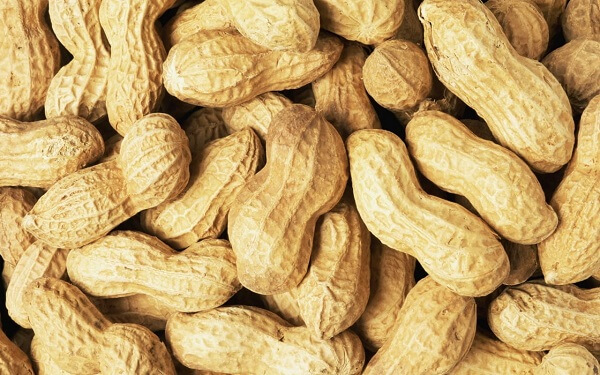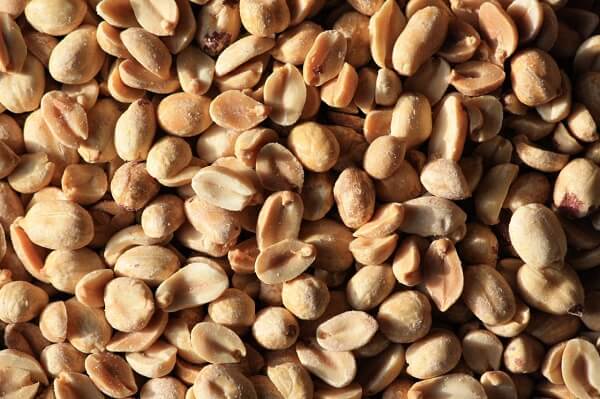Difference Between Groundnut and PeanutWhat is a Groundnut?Groundnut is a widely cultivated legume primarily grown for its oil-rich seeds. Groundnuts belong to the Fabaceae family. The crop is native to South America but is now grown in many parts of the world, including Africa, Asia, and North America. In this post, we will discuss groundnut's history, cultivation, uses nutritional value, and potential health benefits. 
i) History Groundnut has a long history of cultivation and consumption, dating back to the pre-Columbian era in South America. The crop was introduced to Africa by Portuguese traders in the 16th century and has since become an important crop on the continent. Groundnut is now widely cultivated in many parts of the world, with China and India being the largest producers. ii) Cultivation Groundnut is a hardy crop that can grow in a wide range of soils but well-drained, sandy loam soils are considered best for its cultivation. The crop is usually planted in the spring and takes about four months to mature. Groundnut is a legume, which means that it can fix nitrogen in the soil, which can help to improve soil fertility. The crop is usually rotated with other crops to improve soil health. iii) Uses Groundnut has a variety of uses, including as a food crop, an oilseed crop, and an industrial crop. The seeds can be roasted and eaten as a snack or used to make peanut butter and other food products. Groundnut oil is used for cooking, as well as in the production of soaps, cosmetics, and other industrial products. The crop is also used as animal feed, and the leftover plant material can be used as a mulch or fertilizer. iv) Nutritional value Groundnut is a good protein, fibre, and healthy fat source. The seeds contain vitamins and minerals, including vitamin E, magnesium, and potassium. Groundnut also contains antioxidants, which can help to protect the body from oxidative stress and inflammation. However, groundnut is also high in calories, so it should be consumed in moderation. v) Health Benefits Groundnut has been linked to various potential health benefits. For example, groundnut's high protein content can help build and repair muscle tissue, while fibre content can promote digestive health. Groundnut oil has also been linked to a lower risk of heart disease, as it contains healthy fats that can help to lower cholesterol levels. Additionally, groundnut has been shown to have anti-inflammatory properties, which help reduce the risk of chronic diseases. What is a Peanut?Peanut is a legume crop that is widely cultivated across the globe for its edible seeds, which are used in a wide range of culinary applications, including cooking oils, butter, snacks, and confectioneries. We will discuss the various subtopics surrounding the peanut plant, including its history, cultivation, nutritional value, and uses. 
i) Cultivation Peanuts are grown in warm climates, typically in sandy soils with good drainage. They are planted in rows and require moderate rainfall and plenty of sunshine to grow. The plant is self-pollinating, and the seeds develop underground, making them less susceptible to pests and diseases. After harvesting, the pods are dried, and the seeds are removed and processed for various uses. Despite the challenges, peanuts remain an important crop for farmers worldwide. In the United States, peanuts are grown primarily in the southeastern states, including Georgia, Alabama, and Florida. The United States is also a major exporter of peanuts, shipping them to countries worldwide. In addition to the United States, peanuts are grown in many other countries, including China, India, and Nigeria. ii) Nutritional Value Peanuts are an excellent source of protein, healthy fats, vitamins, and minerals. They are rich in mono-unsaturated and poly-unsaturated fats, which are good for heart health. They also contain high amounts of vitamin E, which acts as an antioxidant and helps to protect the body against oxidative stress. Additionally, peanuts are a good source of B vitamins, including niacin, which is vital for energy metabolism, and folate, which is essential for proper foetal development. iii) Uses One of the most common uses of peanuts is for making peanut butter, a popular spread used in sandwiches, crackers, and baked goods. Peanuts are also commonly used in snacks such as roasted peanuts, boiled peanuts, and peanut brittle. In addition, they are used in cooking oils and as a flavouring in various dishes, including African and Asian cuisines. Difference between Groundnut and PeanutGroundnut and peanut are two terms often used interchangeably to refer to the same legume, but they differ in their botanical, culinary, and cultural contexts. We will explore the differences between groundnut and peanut, including their scientific classification, morphology, cultivation, nutritional value, and uses. 1. Scientific Classification Groundnut, also known as earthnut, belongs to the Fabaceae family, subfamily Faboideae, tribe Aeschynomeneae, and genus Arachis. There are several species of groundnuts. Peanut, conversely, is a common name for the legume species Arachis hypogaea, which is also a member of the Fabaceae family. In other words, the peanut is also a type of groundnut or a child plant of groundnut widely cultivated for its edible seeds. 2. Shelf Life Groundnut has a longer shelf life because it has an outer layer as protection to the inner seeds, whereas peanuts have a slightly shorter shelf life as they don't have an outer layer as protection which significantly increases their chances of getting torn from the outside. 3. Storage Groundnuts can be stored and sold as a product without any external packaging while peanuts are sold with external packaging mostly in packets. 4. Morphology Groundnuts and peanuts have similar plant structures, but their morphology has some differences. Groundnut is a prostrate, herbaceous plant that grows up to 50 cm in height and has alternate leaves, yellow flowers, and underground pods. The pods contain two to four seeds, which are oval-shaped, smooth, and covered with reddish-brown or yellowish-brown skin. In contrast, the peanut is a small shrub that can grow up to 50 cm tall and has pinnately compound leaves, yellow flowers, and above-ground pods. The pods are attached to the stem and contain one to four seeds, which are oval-shaped, wrinkled, and covered with light brown skin. 5. Cultivation Groundnut and peanut are widely grown in tropical and subtropical regions, particularly in Africa, Asia, and South America. Groundnut is also more tolerant of drought and can grow in a wider range of soil types than a peanut and has better durability against water-prone areas. However, groundnut is typically grown in fields or gardens, while peanut is often grown in raised beds or small containers. 6. Nutritional Value Groundnuts and peanuts are nutrient-dense foods that provide a range of vitamins, minerals, and healthy fats. They are good protein, fibre, folate, vitamin E, magnesium, and zinc sources. However, there are some differences in their nutritional profiles. Groundnut is higher in mono-unsaturated and poly-unsaturated fats, while peanut is higher in saturated fats. Groundnut is also richer in vitamin E, folate, and minerals like copper and manganese, while peanut is higher in vitamin B3 and phosphorus. 7. UsesGroundnuts and peanuts have similar culinary uses but are also used in different cultural contexts. Peanuts can be roasted, boiled, fried, or ground into a paste to make various dishes, such as peanut butter, and satay sauce. They are also used as a snack food and a flavouring ingredient in confectionery and bakery products. Groundnut is used as a ritual or ceremonial food in some cultures and is used to make groundnut soup, while peanut is associated with American cuisine and snack culture. It is also worth noting that groundnut and peanut have different allergenic properties. Peanut allergy is among the most common food allergies, affecting around 1-2% of the population. The allergic reaction to peanuts can range from mild symptoms, such as hives and itching, to severe symptoms, such as anaphylaxis, which can be life-threatening. In contrast, groundnut allergy is relatively rare, but it can still cause allergic reactions in some people, especially those who are also allergic to other legumes. Regarding environmental impact, groundnut and peanut can have positive and negative effects depending on their cultivation practices. On the one hand, they are relatively low-input crops that can improve soil health, prevent erosion, and reduce greenhouse gas emissions compared to more intensive crops like maize or soybean. On the other hand, they can also contribute to deforestation, water depletion, and pesticide use if grown in monoculture or with unsustainable practices. Overall, understanding the difference between groundnut and peanut can help us appreciate the diversity and complexity of our food system and make informed choices about our diet, health, and environment. Whether you prefer to snack on peanuts or cook with groundnuts, it is important to savour their unique flavours, textures, and cultural significance while also being mindful of their impact on our planet and our health. ConclusionGroundnut and peanut are two closely related legumes that differ in their scientific classification, morphology, cultivation, nutritional value, and uses. While they are often used interchangeably in common parlance, it is important to understand their distinct characteristics and contexts to appreciate their culinary and cultural significance.
Next TopicDifference between
|
 For Videos Join Our Youtube Channel: Join Now
For Videos Join Our Youtube Channel: Join Now
Feedback
- Send your Feedback to [email protected]
Help Others, Please Share










